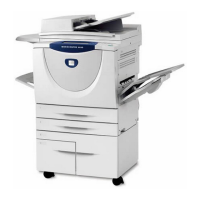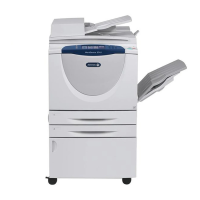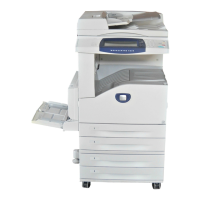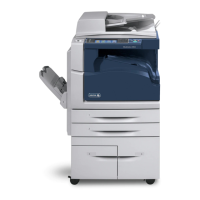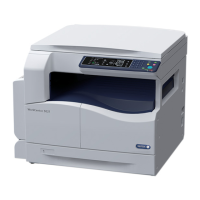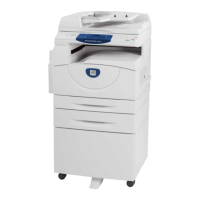Network Configuration
WorkCentre™ 5735/5740/5745/5755/5765/5775/5790
System Administrator Guide
97
h. For Dynamic DNS Registration, check the [Enabled] checkbox to enable Dynamic DNS
Registration (DDNS).
Note: If your DNS Server does not support dynamic updates there is no need to enable DDNS.
6. In the DHCP/DDNS area:
a. For Release Registration, check the [Enabled] checkbox, ONLY if you wish to release this
device's IP Address upon reboot. Default is unchecked.
7. In the Zero-Configuration Networking area.
a. For Self Assigned Address, check the [Enabled] checkbox, to support communicating with
other devices using 169.254/16 IPv4 addressing, over the same physical or logical link (such
as in ad hoc, or isolated (non- DHCP) networks). Refer to the IETF website for zeroconf details.
b. For Multicast DNS, check the [Enabled] checkbox to resolve host names to IPv4 addresses
without using a conventional DNS server.
8. Click on the [Apply] button to accept changes or [Undo] to return the settings to their previous
value.
9. Click on the [OK] button when you see the message “Properties have been successfully
modified”.
Note: Changing the device IP Address will impact other protocols: NetBIOS/IP, LPR/LPD, FTP,
SNMP and Raw TCP/IP Printing. These protocols will need to reference the new IP Address.
Disabling TCP/IP will impact other protocols: NetBIOS/IP, LPR/LPD, FTP, SNMP and Raw TCP/IP
Printing. This web user interface will be disabled until TCP/IP is re-enabled from the local user
interface.
IPv6
Note: IPv6 is optional. It may be used in addition to, or in place of IPv4.
Note: To configure this feature or these settings access the Properties tab as a System
Administrator. For details, refer to Access Internet Services as System Administrator on page 24.
1. From the Properties tab, click on the [Connectivity] link.
2. Click on the [Protocols] link.
3. Select [IP (Internet Protocol)] in the directory tree, the IP (Internet Protocol) page displays.
4. Ensure that [IPv6] is selected.
5. In the General area:
a. For Protocol, check the [Enabled] checkbox to enable the TCP/IP protocol.
Note: If you do not check the [Enabled] checkbox for Protocol, you will not be able to access
Internet Services. TCP/IP must then be enabled from the device's user interface.
Note: If you uncheck the [Enabled] checkbox for [Protocol], the Network Controller will reboot.
This may require several minutes, during which time all network services will be unavailable.
b. Enter a name which corresponds to the IP Address of the device in the [Host Name] field.
c. [Physical Connection] will display the physical network connection. This will display
“Ethernet”.
d. Enter details of an identifier of the IP site in which the device is connected in the [Domain
Name] field.

